FACE LIFT

As we age skin begins to lose its elasticity and the face and neck begin to relax where wrinkles appear deeper and deposits of fat are no longer present in those areas therefore the youthful volume is lost.
A facelift can correct these effects of time, removing skin and excess fat and repositioning where it requires leaving the face lines smooth giving back a youthful, refreshed, and rejuvenated appearance.
Mesofacial Face Lift
this is an intervention that is especially in the age group ranging from 35 to 45 years to reposition the tissues of the cheeks that have undergone a process of the first gravitational collapse deepening the nasogeni folds.
the result is very natural because it allows repositioning of whole skin and muscles and fat without the risk of injury. usually, the incisions are made invisibly hidden among the hair or the lower eyelid rhyme and through the use of fiber optics will replace the failure of tissues without leaving visible scars. the results are exceptional with little risk, but we must keep in mind that the post-operative needs at least 4 weeks of convalescence and recovery.
Restructuring Face Lift
it’s a kind of very advanced surgery that through the preauricular engraves of classic and meso-facial facelift permit to obtain a rejuvenation of the whole face and neck without giving an appearance of the skin only "pulled". it is often associated with lipofilling so as to restore the volumes of adipous atrofied tissue. post-operative for the scale of intervention needs at least 3-4 weeks of convalescence to return to society without sequelae such as edema and bruising.
MACS
The latest news in terms of facelift is from a minimum separation with minimal scarring and especially as defined by acronimo (minimal access cranial suspension).
this is a facelift that by its conservative nature can get excellent results with minimal bleeding and a fast recovery. it is also for those people who are avid smokers and who could not make a conventional facelift without serious vascular risk of the skin facial flap or for people who want to get a good result with need recovery times shorter than a conventional facelift.
the incision for access starts by the base of the hairburns and ends just behind the ear lobe in a way as to minimize the incision and all risks. the separation of the flap is reduced to the minimum necessary to apply 2 or 3 wire suture in tissues that have become ptosic and put it back up. points are generally applied at the neck to lift the skin and eventually relaxed, the lower jaw to better define the edge jaw and cheekbones in order to restore harmony to form a lower eyelid and eliminate the nasogenieni folds.
the surgery is made only in two hours under local anesthesia and without shelter.
Endoscopic Face Lift
this is a type of mini-invasive and very sophisticated aveniristic surgery that through the use of optics fibers and a microcamera introduced below the tissue through tiny incisions of the scalp, allows you to quickly and with a modest post-operative saquelae lifts front and eyebrows in an excellent way and painless.
it’s indicated especially in those patients who need to return to life quickly and in need to rejuvenate the front portion.
after having introduced the microcamera and emphasized good anatomical structures to raise and fix the wire suture portions of eyebrow and face to be modified to improve the present imperfections and give the patient a particular look brighter, youngness and freshness.
the intervention is performed under local anesthesia with sedation for 1 hour half.
<
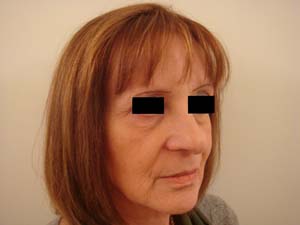
Before intervention
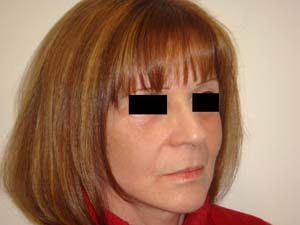
After intervention
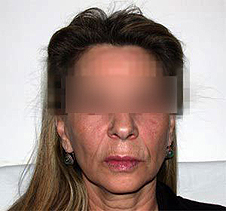
Before intervention
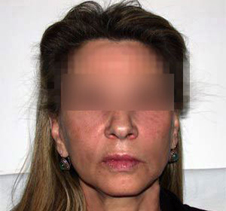
After intervention
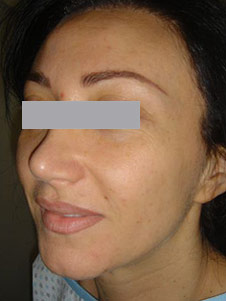
Before intervention
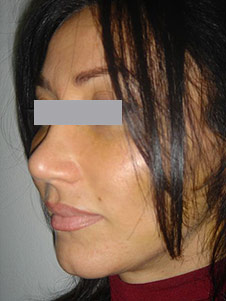
After intervention
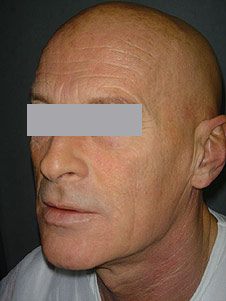
Before intervention
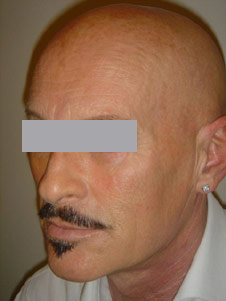
After intervention
What is facelifting
It is important to stress that the particular technique of lifting that we use does not over-stretch the skin which therefore allows for your skin to remain flexible enough that your true facial expressions are very natural. The real effect of rejuvenation is not achieved only with a total stretch of all wrinkles, but with a fair and targeted remodeling and repositioning of skin structure. It varies from person to person which this surgery can be addressed but many patients between 40 and 60 years of age have been recognized for this surgery. Face lifting has also been successfully perfected on patients 70-80 years.
The Facelift is Individualized
There is only one type of lifting and the intervention is done only by acting on specific areas of the face using different techniques. The intervention will be planned carefully with the patient taking into account a large number of variables (age, skin type, morphological constitution, expectations of the patient, etc.)
The lifting of the forehead and eyebrow paves the wrinkles of the forehead and raises the eyebrow. The lifting of the temples stretches around areas of the eyes. During a meso facelift, the cheekbone is lifted and the fat repositioned in which with age tends to fall. An additional facelift of the neck requires another incision under the chin to remove fat and excess skin.
The mini lift is a small intervention concentrating mainly on the crows feet correction... With small incisions made to the scalp absolutely invisible can smooth wrinkle areas around the orbits and is accomplished under local anesthesia. The effects of a mini lifting, being a minor surgery, are obviously less durable but with few complications.
An endoscope lifting is a particular technique, usually applied in areas of the forehead, cheeks, and eyes, which has the advantage of requiring only three or four small incisions in the scalp. The surgeon operates by introducing a tiny camera through the incisions allowing him a direct vision of the operative area in order to exactly reposition the tissues.
Lifting of one or more areas of the face can safely be combined with a blefaroplasty surgery (intervention of eyelids and bags under the eyes) or any other facial rejuvenation treatments (see chapters on).
Results
A facelift may make you look 10 years younger but you cannot stop the clock. The normal aging process continues even after the intervention. The duration of the results of a facelift is very personal and depends largely on your predisposition and the constitution of your subcutaneous tissue.
Usually, there is no complexity to repeat the action after 8-10 years.
Anesthesia and recovery
The location and type of anesthesia is decided according to the technique that the patient has chosen. Usually, a complete facelift runs more often in a clinic under general anesthesia. It is a work of precision that usually lasts about 3-4 hours. Pre-surgery analysis, as well as a visit from the anesthetist, will be made in the same clinic the day before. The hospital visit can last up to 1 day.
On the other hand, smaller surgeries such as mini lifting can be accomplished also at the doctor's office using local anesthesia and a sedative. In this case, you do not need a period of hospitalization.
Precautions before the intervention
To minimize the risks and complications, follow all instructions given by your surgeon both before and after the procedure.
Let your surgeon be aware if you have ever suffered from allergies or other chronic diseases. If you bruise easily or bleed excessively in the case of small wounds, you may require further analysis to exclude difficulties of your blood not to clot. Tell your surgeon also if you had a period that you had a rapid weight reduction, because it may influence the outcome of the intervention. Smokers should quit smoking at least 4 weeks before the intervention because the smoke adversely interferes with the process of healing.
There are aspirin-type painkillers to be avoided during the following two weeks after the intervention because their active ingredient interferes with blood clotting and can cause excessive bleeding. You must also avoid all alcohol and sleeping pills.
Who comes in with very short hair can firstly choose to grow it out a bit so it’s better to hide the scars immediately after the procedure. Towards the end of the healing, you can choose to trim your hair to your liking. It is not absolutely necessary to shave the hair in the area of the surgery.
Intervention process
In local or general anesthesia, there are incisions made in a particular area depending on the type of lifting chosen previously by the surgeon.
For a facelift and meso-facial there are cuts starting from the temples about 5cm from the hairline which passes in front of the ears behind the lobe and ends in the area covered by the neck. For a lifting of the front instead cutting is behind or at the edge of the front line of the hair and it goes from one ear to the other. If there is the need to intervene on the neck due to loose skin there is also a small incision made below the chin.
The skin is taken from fat and muscle below. With very thin thread the tissue, the muscle, and the fat are repositioned and fixed. The excess fat is sucked if necessary or relocated. The skin is then pulled eliminating the excess and the final suture is made.
In some cases, two small drainage tubes are placed behind the ears, for the first 24 hours, under the skin to draw any haematoma that can be formed below the area which was opened during the surgery. Once the intervention is finished a bandage is applied slightly over the operated area. During this precise operation, the surgeon performs a fine work by a sculptor. The success will depend on his experienced hands, his knowledge and expertise, and his aesthetic sense.
What happens after surgery
Immediately after the procedure your skin will be stretched and swollen. Oedemas on the cheeks and on the chin are normal. The swelling reaches its top around 1 or 2 days after the surgery and it can greatly change your features. After 2 or 3 weeks the swelling will be completely disappeared.
Light pain can be controlled with appropriate painkillers.
The bandage and any drains are removed after one day, and the stitches usually after 10 days. The scars are well hidden by the hair or natural folds of the skin.
To see the final result you must wait, according to the type of intervention, a few months.
Possible complications
One of the possible complications of a facelift consists in a decreasing skin sensibility of the forehead and the front of the ears for a short or long period.
The tension of the skin can lead to a temporary loss of hair in the area of the temples, hair that grows in the months ahead anyway.
Other complications arise from blood circulation due to the vice of smoking, which can cause skin necrosis and evident scars. This can be fixed with a small additional intervention.
Only a few cases, to be excluded if it’s involved a capable surgeon, during the intervention skin or muscle nerves could be damaged. These nerves regenerate themselves in a few weeks or months. A permanent lesion of the facial nerves is an extremely unusual complication!
Precautions after surgery
The time required for a full recovery depends greatly on the type of lifting and on your own tendencies. In any case, it would be good to observe a rest period of 5-8 days, during which it is better to avoid excessive physical activity, alcohol, smoke, steam baths, and saunas. During these days it is better to give up even facial creams.
After about 8 days you can have showers again and start with the make-up...
Do not take aspirin-type painkillers and do not smoke in the 4 weeks after. During this period also avoid direct sunlight. Lately, if you want to sun-tanning, use a high-protection cream.
After 4 weeks you can go back to all your sports.
